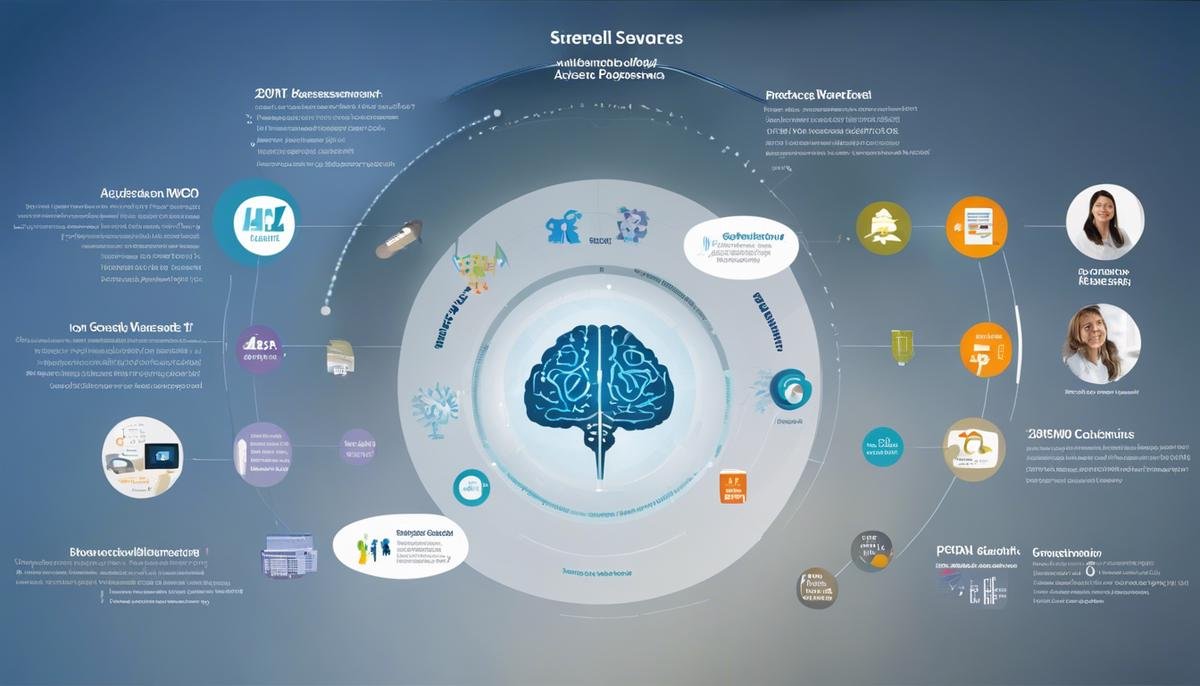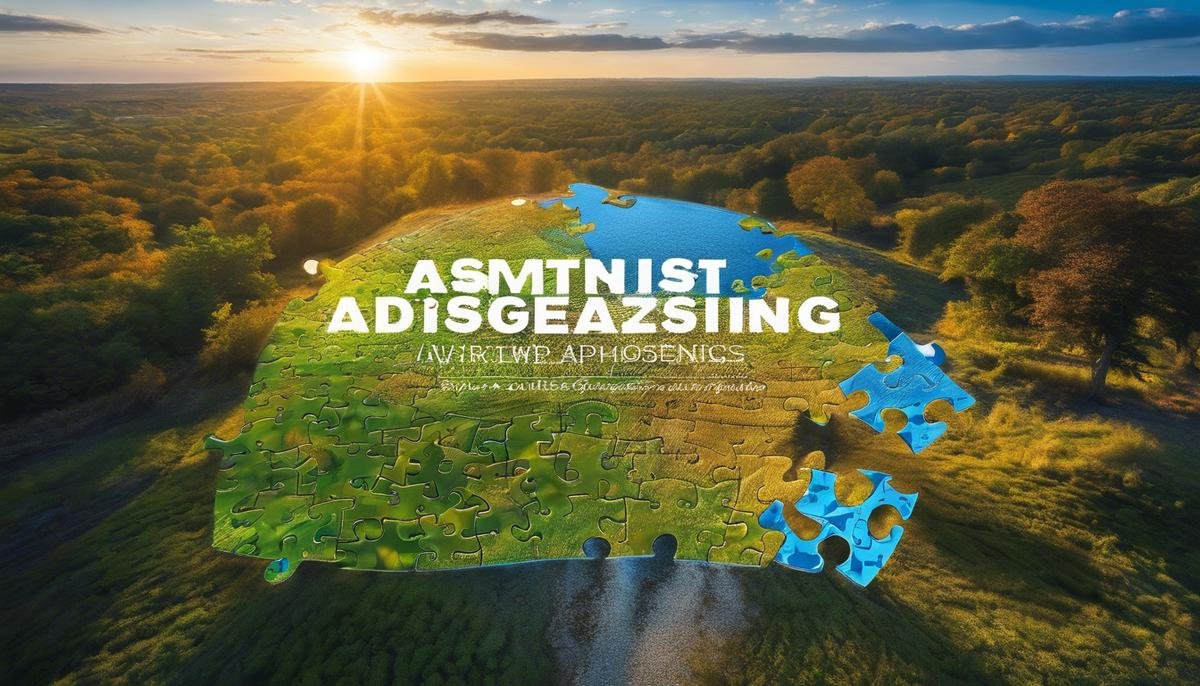
As we journey through the dynamic landscapes of modern medical science, there is perhaps no area more compelling and swiftly evolving than that of Autism Spectrum Disorder (ASD) diagnostics. The advancement in time and technology has led to a significant transformation in the methods to diagnose autism, accounting for socio-cultural factors and aiding in crafting individualized treatment plans. Parents and caregivers, too, have emerged into key roles within this scenario, empowered more than ever to be active in their child’s diagnosis and communication process in 2023. This exploration aims to delve into these varying aspects of autism diagnosis trends, with a particular focus on the most recent advancements and their far-reaching impact in society.
Latest Methods of Autism Diagnostics
The Evolution of Autism Diagnosis Methods: A Dive into the Progress Made in 2023
As with any field of healthcare, the path to diagnosing autism has seen its share of remarkable transformations over time. And, in 2023, we’re experiencing another wave of advancements that have made the process more nuanced, accurate, and faster.
Autism, or Autism Spectrum Disorder (ASD), is a complex neurological disorder that impacts a person’s development, impacting social interaction, communication, interests, and behavior. The signs and symptoms of autism often appear between the ages of two to three years old, though sometimes as early as 18 months.
In years past, diagnosing autism was largely dependent on behavioral observations and parent-reported data. While these methods are certainly necessary and still in use today, advancements in genetic testing and biomarker identification have started to alter the landscape of autism diagnosis in 2023.
First and foremost, let’s take a moment to appreciate the advancements in genetic testing. Did you know that around 20% of autism cases are found to have a genetic cause? Yes, by mapping out a child’s genetic makeup, doctors can identify certain genes linked to autism, offering a clearer diagnosis. Such precision is essential for effective treatment planning, subsequently leading to improved outcomes.
Biomarkers have also emerged as a crucial tool in the diagnosis path of autism. In simpler terms, biomarkers are measurable signs in the body that indicate a certain condition – think of them as clues leading doctors one step closer to a diagnosis. Ongoing research in 2023 has been brimming with excitement around potential autism biomarker identification in areas like neuroimaging and blood samples. These developments, though still in their infancy, hold tremendous promise for future diagnosis strategies.
Of course, in the midst of these incredible scientific strides, the role of the traditional diagnosis method – behavioral observations – remains as critical as ever. Comprising evaluations of a child’s social, speech, and cognitive abilities, these observations hold an irreplaceable role in the diagnosis journey. The fascinating bit is that technological progression in 2023 has introduced intelligent software capable of accurately tracking and interpreting these behaviors, further assisting healthcare professionals in their diagnostic duties.
The digital age also ushered in the advent of telehealth, making initial autism screenings and consultations more accessible for parents in 2023. This innovative approach helps identify potential autism cases in children earlier and can gauge the need for further assessments without requiring families to make potentially arduous trips to clinics or hospitals.
The evolution of autism diagnosis methods in 2023, typified by blending traditional behavioral assessments with state-of-the-art genetic tests, biomarkers, digital tools, and telehealth, is nothing short of splendid. While there’s certainly still plenty of ground to cover, each stride brings us closer to enhancing the lives of those on the autism spectrum and their families.
Sharing in our common mission for nurturing and caring, this newfound insight arms us with the knowledge to encourage a more empathetic and understanding society. We are all on this journey together, exploring, understanding and advocating for the best possible lives for our little ones. Keep learning, and keep loving!

Impact of Social and Cultural Factors on Autism Diagnostics
As we delve deeper into the dynamics of autism diagnostics in 2023, it’s worth noting that societal and cultural factors have a considerable impact on both the diagnostic process and the experiences of individuals and families dealing with a diagnosis. Recognizing and understanding these factors can help us create a more inclusive, empathetic, and understanding society where all individuals, including those on the autism spectrum, can flourish.
One critical social consideration is the stigma associated with autism and other neurological disorders. Despite the significant strides we’ve made as a society in understanding and accepting Autism Spectrum Disorder (ASD), some misconceptions and biases persist. These prejudices can delay diagnosis as parents may fear the stigma and its potential implications on their child’s life and their family’s social standing.
Conversely, increased awareness and understanding of autism have also led to an enhanced focus on early diagnosis. Support networks, public awareness campaigns, and increased media representation of ASD in 2023 have made autism a more recognized and accepted condition. This heightened awareness can encourage parents to seek early diagnosis and intervention, consequently, improving the overall quality of life for those with autism.
Cultural factors also play a vital role in shaping autism diagnosis. For instance, culture impacts the perception of developmentally different behavior. Behaviors accepted or overlooked in some cultures might be seen as signs of a disorder in another. This cultural variation can influence when and how a diagnosis is sought and received. In 2023, it’s crucial for healthcare professionals to adopt a culturally competent approach. This means understanding cultural nuances and being sensitive to diversity in autism diagnosis.
Another aspect we can’t ignore is the socio-economic disparity in accessing autism diagnostics. In 2023, resources and opportunities for diagnosis might not be evenly distributed, with disadvantaged groups facing barriers like affordability, accessibility, and lack of awareness or skilled professionals. Therefore, our efforts should not just be focused on further refining the diagnostic methods but also in ensuring these advancements reach every corner of our society.
Moreover, we are seeing an increase in community-level initiatives in 2023, which focus on creating a supportive environment for families navigating the complexities of diagnosis. These grassroots efforts aid in demystifying autism and promoting inclusivity, facilitating a smoother and more positive diagnostic journey.
To conclude, in 2023, our understanding of autism and its diagnosis has significantly evolved. However, as we embrace the blend of traditional and modern diagnostic tools, we must also address the social and cultural factors that shape this process. This holistic approach ensures that every child and family has the opportunity to benefit from advancements in autism diagnosis, thus reinforcing our commitment to empathy, understanding, and advocacy.

The Effect of Autism Diagnosis Trends on Treatment Plans
The Shape of Autism Treatment Plans in 2023, Paving the way to a Fruitful Future
In light of major advancements in autism diagnosis methods, the landscape of autism treatment plans has equally undergone dramatic transformations, bettering experiences and outcomes for both individuals on the autism spectrum and their families by leaps and bounds.
One fundamental shift to note lies in the individualized treatment strategies adopted in 2023. Building on heightened understanding of the autism spectrum and propensity to focus on the person rather than the disorder itself, the one-size-fits-all approach has been significantly diminished. Now, treatments are tailored to each individual’s unique strengths, weaknesses, interests, and challenges. Emphasizing personalized care enforces the idea that every individual with autism is unique and deserves a care plan that mirrors their individuality.
Moreover, personalization also extends to family-centric care. Recognizing the crucial role families play in the successful implementation of an autism treatment plan, more efforts are made to involve them in the treatment process. Family training sessions, group therapy, and other family-inclusive programs have become integral pillars of comprehensive care, ensuring that the home environment is optimized to support developmental progress.
Another noteworthy effect of the evolving autism diagnosis trends on treatment plans is the rising importance of mental health upkeep. The cognizance that autism isn’t just about cognitive and behavioral challenges, but also encompasses a higher likelihood for mental health difficulties, has led to an increased emphasis on psychological well-being. More than ever before, treatment plans include mental health screenings and supportive psycho-social therapies aimed at ensuring a wholesome treatment process.
Increasingly, multidisciplinary treatment models are becoming common. The provision of coordinated care that includes everything from occupational and speech therapy to social skills groups and recreational therapy is gaining traction. This approach allows for a broader view of development, and the simultaneous addressal of challenges in multiple areas, accelerating overall progress.
Applied Behavioral Analysis (ABA), long a standard in autism therapies, has also evolved in 2023. Alongside the advent of more nuanced diagnosis techniques, treatment methods have also fine-tuned. ABA now combines principles of positive reinforcement with integrated technology, enabling more efficient progress tracking and personalized interventions.
Significantly, the pervasive issue of accessing treatment has also been addressed to some degree. Just as telehealth opened up access to autism diagnosis, it has brought autism therapies to those who previously could not access them due to geographical, financial, or other barriers. Remote therapies, online family training, and e-therapy groups have become commonplace, granting access to quality care irrespective of location.
Undoubtedly, the wonders of advanced technology have seeped into treatment methodologies as well. AI and machine learning are used to improve the precision of treatment, augment therapy sessions and streamline progress tracking, providing families with comprehensive, real-time updates on their child’s development.
Finally, cultivating a supportive community remains of utmost importance. Community-based initiatives, peer-support groups, and social integration programs have all found their rightful place within the framework of autism therapy, ensuring no family feels alone in their journey.
The strides in autism diagnosis trends have indeed sculpted promising avenues in treatment plans. With each development aimed at championing the well-being and development of individuals on the autism spectrum and their families, there’s ample hope that the future of autism care will continue evolving towards inclusivity, understanding, and personalized growth. So here’s to navigating the beautiful spectrum of life with positivity and grace, knowing you’re not alone in your journey.

Parental Roles and Their Effects on Autism Diagnosis Trends
In the heart of 2023’s diagnostic landscape, parents unquestionably play a pivotal role. Recognizing and acknowledging autism early and rightly promotes the development of a child with Autism Spectrum Disorder (ASD). As such, equipping parents with the knowledge needed to identify early signs is crucial, putting a higher premium on the quality of autism education parents receive.
Parental involvement is instrumental in the early identification of ASD due to their regular interaction with the child. Detecting subtle changes in behavior, when armed with the appropriate autism education, could result in an earlier diagnosis. Understandably, the capacity of a child to express themselves fully is often limited, particularly during toddlerhood. This situation is further complicated if the child has ASD, ensuring that parents’ monitoring role is both profound and indispensable.
Parents also play an essential part in the application of early intervention strategies. Such therapies can start even before a formal diagnosis solidifies, allowing valuable progress in a child’s development. Consequently, informing parents about various early intervention methods available can substantially increase their effectiveness.
Given these instances, community-based educational campaigns are deeply essential. This initiative helps parents understand autism better, equipping them with the necessary tools to support a child with ASD. A proactive, supportive community mitigates the feeling of isolation, motivating parents to remain resilient against possible challenges.
Furthermore, parents’ role extends to advocacy. By influencing policy and driving change, parents can contribute significantly to the improvement in autism diagnosis trends. Active participation in local community councils or special education committees can foster progress on systemic levels. This method encourages the discussion about autism – dissolving misconceptions, eradicating stigma, and ultimately, fueling societal acceptance.
Socio-economic disparities can often hinder access to autism diagnostics. Parents’ function as advocates becomes even crucial in addressing this pressing issue. Encouraging the implementation of policies that foster equality in diagnostic access presents a tangible resolution. Greater parental involvement in local schools and community organizations also amplifies the call for equal access to resources.
Beyond the diagnosis phase, parenthood offers invaluable insight into a child’s life, crucial in the treatment process. Parents’ unique understanding of their child’s strengths, weaknesses, fears, and interests proves instrumental in shaping personalized treatment strategies. This collaboration ensures that treatments are not just effective, but also meaningful for the child.
As parents navigate the complexities of an autism diagnosis, embracing an open attitude towards novel therapeutic avenues and technological advancements becomes vital. Keeping pace with Artificial Intelligence and machine learning as they shape treatment strategies necessitates an open mind and active participation. Here, acceptance is crucial- acceptance not just of the diagnosis, but also of the evolving technology designed to ease the journey.
In conclusion, one of the most consistent elements of a child’s life is their parent’s support, offering a unique and compassionate perspective in the diagnosis and treatment of autism. Parents play crucial roles in early detection, intervention, community advocacy and engagement, and individualized treatment strategies. By nurturing a supportive and inclusive community, we can move towards a future where autism is no longer a misunderstood enigma but a condition met with empathy and understanding.

The role of parents, caregivers, and influences of socio-cultural variables in the diagnosis of Autism Spectrum Disorder continue to shape the trends of 2023. This evolution is enhancing early detection strategies, helping health professionals design more effective treatment programs and enabling parents to take on more active and informed roles in the process. The changes amplify the importance of treating each ASD case as unique and prioritizing tailored support. As we move forward, the path may be paved for an even better understanding of autism and improved processes aimed at ensuring the well-being and holistic development of those on the spectrum.




